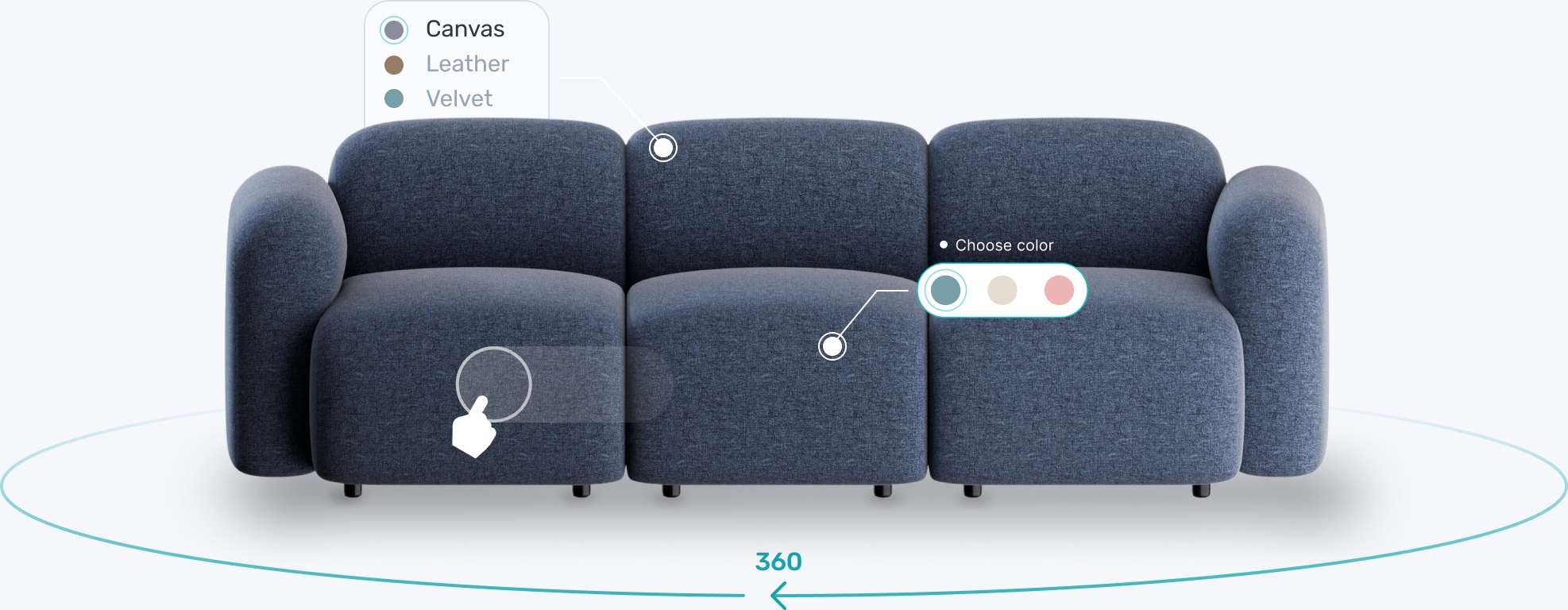Transform your eCommerce strategy with 3D & AR



.jpg)

3D content is a lot more important now than it was just a few years ago. Driven by major industry trends such as the metaverse, 3D advertising, and consumer demands for deeper engagement with the digital world, 3D is the bedrock behind it all.
Big global brands like BMW, PUMA, and Ashley are already discovering how to use 3D to unlock benefits unique to their business. And now, even smaller brands are turning to 3D to cut costs, boost critical KPIs, and stay ahead of the competition.
The question is no longer whether to choose 3D, but which solution is right for your business. In this blog, we take a look at the pros and cons of working with freelancers vs a 3D content engine or building an in-house team.
In order to create 3D content, you need only a few basic elements to get started.
It’s where we go from here that requires a little strategy.
Especially when companies move from proof of concept to working with a steady pipeline of digital assets, managing this workflow becomes more demanding. And the tools and skills required to manage them more sophisticated.
When working with any new technology or business solution, it’s natural to look at what your peers are doing. Curious to find out more, CGTrader ran a recent poll on LinkedIn asking our audience the following question: How do you source your 3D assets?
Interestingly, 46% reported that they use an in-house 3D team. While this also says a lot about our more specialized 3D audience, it’s also true that a growing number of brands are now at the stage of considering an in-house team as their 3D pipelines become more complex and embedded into their work process.
Coming in a close second, 42% work with a partner like Modelry. Compared to an in-house team, outsourcing to an organization has the advantage of scale and flexibility. Whether that’s a one-off project or a steady flow of SKUs, a 3D solutions partner comes with a lot of additional benefits, which we’ll address in more detail further on.
The remaining 12% of respondents don’t use 3D at all.

Before we walk through the pros and cons of each choice, it’s important to understand what to look out for when choosing a 3D content supplier. Beyond the cost, there are a number of key things to consider:
Once you can answer these questions, you’re ready to decide who to work with. In the next section, we examine the 3 main available options and the pros and cons of each.
A single freelancer is really good for one or two shoes, but as we were looking to scale-up our projects and create more digital assets, this can only be done with a scalable organization like CGTrader. Josef Trojan, 3D Designer Sportstyle Footwear, PUMA
Freelancers are individual or independent designers not tied to any particular organization. This choice is most common among companies who are just starting out with 3D and have a specific, one-off project in mind.
Content suppliers are companies that specialize in all things 3D, to varying degrees. From requesting your model to delivering your 3D solutions as well as helping you store and manage your assets, most offer more than just model creation.
To take full advantage of these services, content suppliers are the top choice for brands looking to implement a longer-term 3D strategy.

A typical progression we see among our customers is that they often start out using freelancers to find out whether 3D is the right solution for them. Next, they upgrade to a content supplier in order to unlock the benefits of scale and integrated solutions. And finally, build an in-house team to help manage their growing pipeline of digital assets. Usually, the team is set up not to replace but to complement the work of an external content supplier.
CGTrader is one of the longest-standing 3D companies in the world, with over 15 years of experience working with international clients and designers. A one-stop-shop for all things 3D, we are the partner of choice for brands and commerce players looking for 3D and Augmented Reality solutions, digital asset management, and a best-in-class automated quality assurance system.
Our pricing is transparent and on-demand. We don’t operate a subscription-based model because we understand that our clients’ needs can fluctuate. But don’t just take it from us, see what our customers have to say in our case studies.

Ready to discuss your next project? Click here to book a free consultation.




